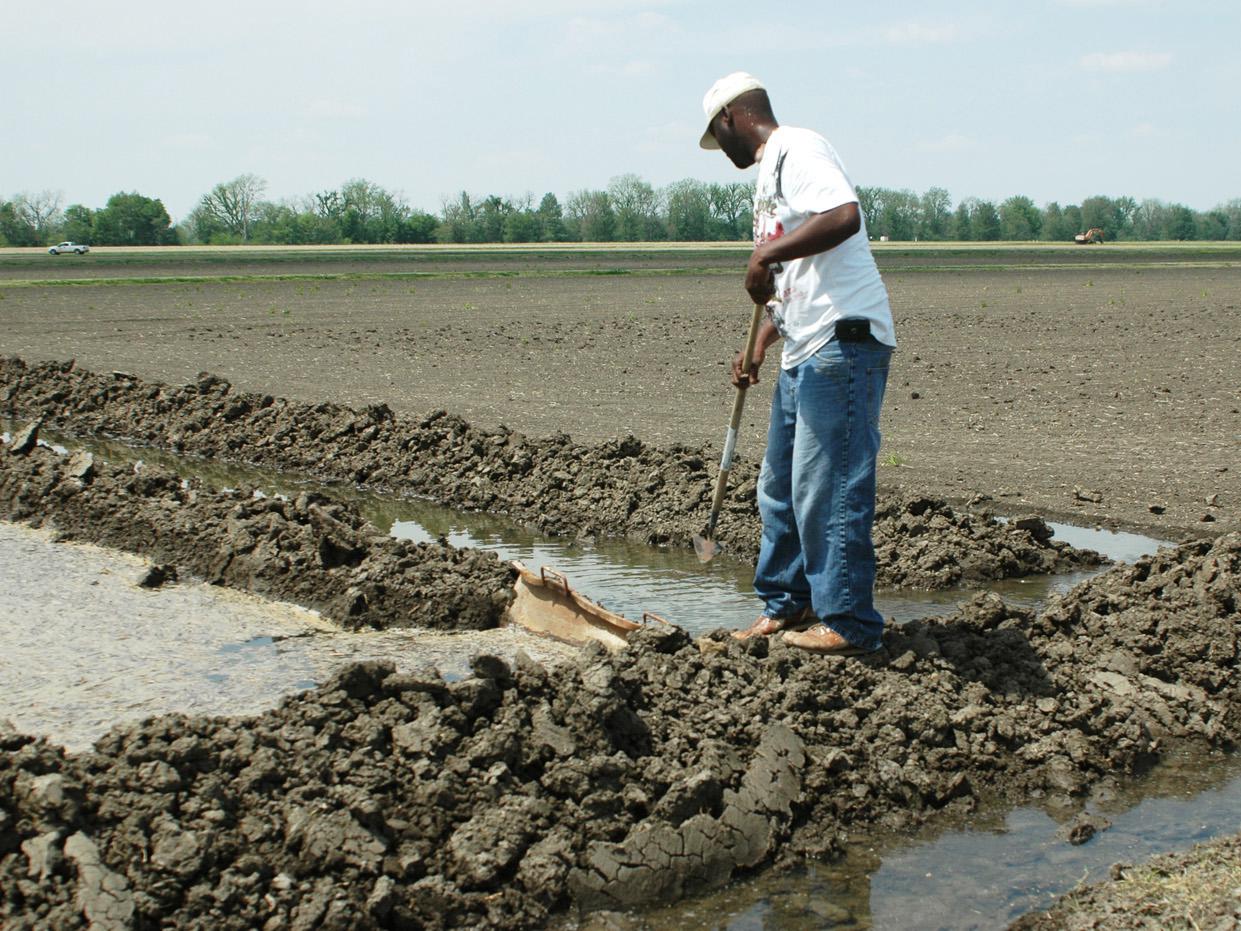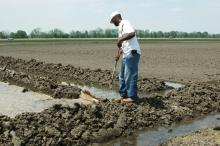Information Possibly Outdated
The information presented on this page was originally released on April 30, 2010. It may not be outdated, but please search our site for more current information. If you plan to quote or reference this information in a publication, please check with the Extension specialist or author before proceeding.
Rice begins 2010 with good stands
STONEVILLE – Mississippi’s 2010 rice crop is ahead of schedule and looking good, even after strong storms swept through the state in April.
Nathan Buehring, rice specialist at Mississippi State University’s Delta Research and Extension Center, said growers had about 75 percent of the crop planted by the end of April. In the last two years, the majority of the planting took place well into May.
“Before the April 24 storms, we had near-perfect weather for fieldwork, which was good because of the amount of ruts in the fields from last fall’s harvests in wet conditions,” Buehring said. “Farmers had to work much harder this spring to get their fields ready for planting.”
Although many people think of rice as a water-loving crop, the time to flood the fields does not come until the plants are about 6 inches tall. Growers like for the plants to grow quickly to minimize the cost of extra weed control.
“The big storms did not damage the young crop but brought some fields as much as 5 inches of rain, and then it turned much cooler,” Buehring said. “Cool weather really slows growth and development of all crops.”
Mississippi farmers are expected to plant about 270,000 acres of rice, up 25,000 acres from 2009. Buehring said every rice-growing state is expanding its acreage, which will likely impact prices near harvest time.
“There are many reasons growers are increasing their rice acreage. One reason is they want more diversity on their farms. Rice prices have been decent, but they have come down quite a bit from the winter months,” he said.
Extension agricultural economist John Michael Riley said declining prices are primarily due to a stronger U.S. dollar. In February, the September futures price was running around $13.50 per hundredweight. Currently, those prices are about $12.30 per hundredweight.
“Demand for rice is looking good, so we should continue to see exports increase in spite of the strengthening dollar,” he said.
Riley said the cost of production for all crops has come down since 2008.
“All the crops are in the same boat -- unusually level -- regarding profit potential, so growers are making decisions based on rotation needs and other factors,” he said.
Coahoma County Extension director Don Respess said the big rains were actually needed in the rice fields, both for the crop to emerge and to help pack the newly constructed levees.
“When we build the levees, a big rain helps pack them down for holding water later. If fields don’t get the big rain event, farmers have to flush the fields with water,” Respess said. “The rains probably saved farmers money.”
Respess said planting delays on the final rice fields will not become critical until after the middle of May.












